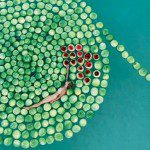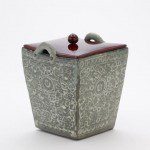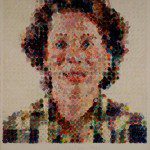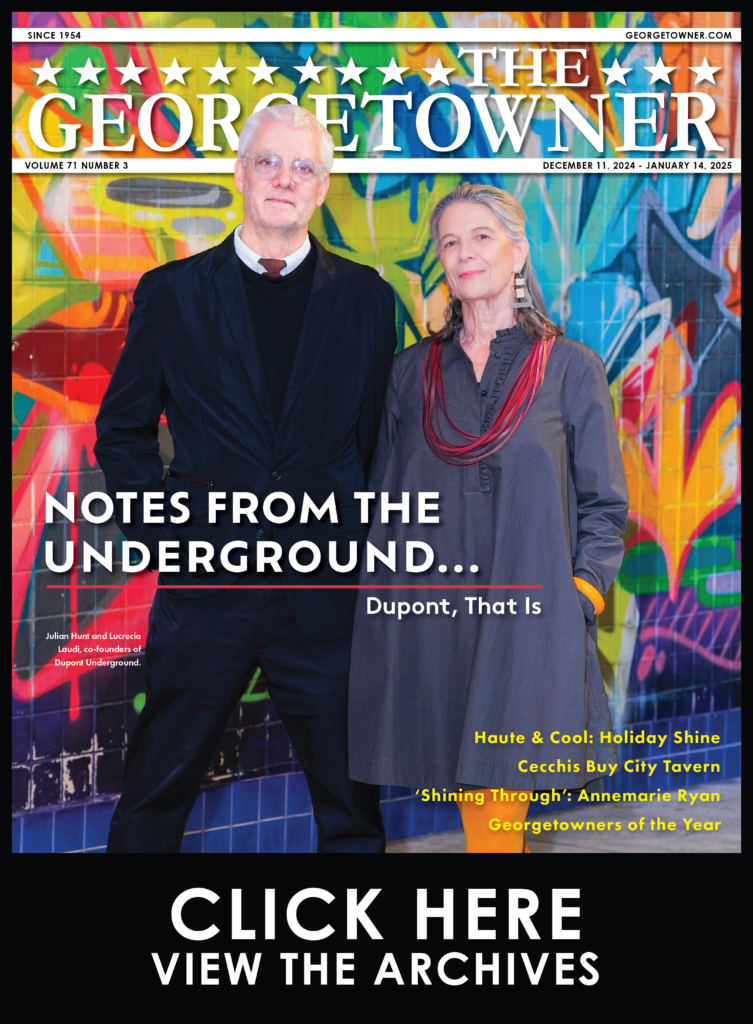Visual Arts: Freer’s Japan, Whistler and August Saint-Gaudens
By • January 17, 2014 0 1803
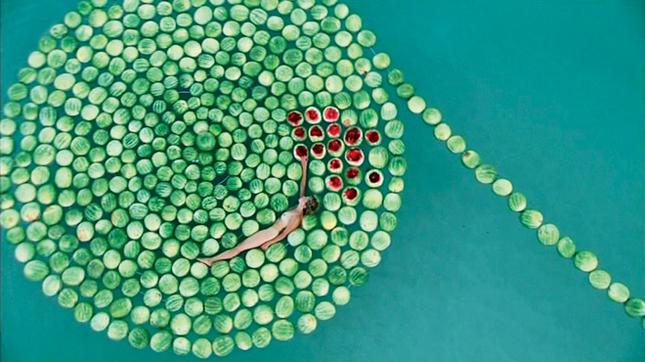
Freer – Sackler
Aug. 24 – Feb. 9, 2014
Charles Freer and the Arts of Japan
Between 1895 and 1911, Charles Lang Freer (1854–1919) visited Japan five times, establishing himself among Japanese collectors as a formidable and respected peer. Paintings currently on display in the Japanese galleries reflect the evolution of Freer’s understanding of Japanese art, as well as the diversity and quality of his acquisitions. At the time of his death, Freer bequeathed some 600 Japanese paintings to the Freer Gallery of Art. Today that number has more than doubled, but the prototype for collecting has continued to honor his sensibilities. These works are exhibited with a nod to the 90th anniversary of the opening of the Freer Gallery in 1923.
Aug. 24 – Feb. 9, 2014
Korean Style in Japanese Ceramics
Korean ceramics arriving in Japan as trade goods in the 15th and 16th centuries captured attention for the quality of their form, glaze, and decoration, far surpassing what Japanese kilns could produce. Korean bowls in particular were coveted for use as tea bowls. Even after Japanese pottery-making skills improved, neither potters nor customers forgot their profound admiration for Korean stoneware ceramic styles. Focusing on tea bowls, this exhibition offers a selection of Japanese vessels inspired by Korean models, spanning the 17th through 19th century.
Sept. 28 – September, 28, 2014
Off the Beaten Path: Early Works by James McNeill Whistler
In the summer of 1858, 24-year-old Whistler traveled with a friend from Paris through the Rhineland. Their goal was to reach Amsterdam and view “The Night Watch” and other paintings by Rembrandt van Rijn—but they soon ran out of money and were forced to return to Paris. Their excursion through the countryside, where they drew portraits in exchange for food and lodging, resulted in a body of work that for years served as source material for the artist. The drawings, etchings, and watercolors on view not only document Whistler’s adventures, but they also shaped his selection of subject matter and his approach to composition, light and shadow, and perspective.
National Gallery of Art
Sept. 1 – January 5, 2014
Yes, No, Maybe: Artists Working at Crown Point Press
The exhibition features 125 working proofs and edition prints produced between 1972 and 2010 at Crown Point Press in San Francisco, one of the most influential printmaking studios of the last half-century. The stages of intaglio printmaking reveal the printmaking process in very particular ways. They are used to monitor and steer a print’s evolution, prompting evaluation and approval, revision, or rejection. Each proof compels a decision: yes, no, maybe. Among the twenty-five artists represented are those with long ties to Crown Point Press—Richard Diebenkorn, John Cage, Chuck Close, and Sol LeWitt—as well as those whose association is more recent, such as Mamma Andersson and Amy Sillman.
Sept. 1 – Jan. 5, 2014
Northern Mannerist Prints from the Kainen Collection
Ruth Cole Kainen was one of the most important collectors of prints and drawings in recent decades, and bequeathed major works to the National Gallery of Art. This exhibition?the first of three to focus on central aspects of her bequest?presents some 50 works that embody the sophisticated imagery, extraordinary stylization, and virtuoso technique of the flourishing printmaking industry in the northern Netherlands in the late 16th century. Included are exquisite interpretations by the finest engravers of the powerful works of Goltzius and the leading Netherlandish painters Cornelis van Haarlem, Abraham Bloemaert and Bartholomaeus Spranger.
Sept. 15 – Jan. 20, 2014
Tell it with Pride: The 54th Massachusetts Regiment and Augustus Saint-Gauden’s Shaw Memorial
To commemorate the 150th anniversary of the Battle of Fort Wagner, this exhibit celebrates its magisterial Shaw Memorial by Augustus Saint-Gaudens, honoring Colonel Robert Gould Shaw and the 54th Massachusetts Volunteer Infantry, one of the first regiments of African-American soldiers during the Civil War. The exhibition features daguerreotype and tintype portraits of the soldiers, the people who recruited them, including Frederick Douglass, Charles Lenox Remond and Sojourner Truth as well as the women who nursed, taught and guided them, such as Clara Barton, Charlotte Forten, and Harriet Tubman. Letters, a recruiting poster, and the Medal of Honor awarded to the first African-American soldier who earned this distinction are also displayed, as is work by 20th- and 21st-century artists who have reflected on the continuing importance of the 54th Massachusetts, the Battle of Fort Wagner and the Shaw Memorial.
American University
Museum at the Katzen Arts Center
Opening Sept. 3
Green Acres: Artists Farming Fields, Greenhouses and Abandoned Lots
This exhibition of contemporary art addresses ecological issues, brought over from the Contemporary Arts Center in Cincinnati, Ohio. The show is a multifaceted, “multi-seasonal” interactive art venture focused on art and agriculture that comprises several elements and a series of public programs. It will also incorporate broad community involvement across the county and region, with a goal to visually and spatially engage the public in a discussion around topics related to food, agriculture, urban farming and livability, and to expose the investigations artists are making in these areas. The exhibit is in collaboration with the Arlington Arts Center, which presents its half of Green Acres through Oct. 13.
Donald Rothfeld Collection of
Contemporary Israeli Art
This is the first exhibition of Donald Rothfeld’s extraordinary gift of Israeli Art to the American University Museum at the Katzen Arts Center in honor of H.E. Ambassador Michael B Oren. Selections from the extensive collection chronicle Israel’s history and include the work of numerous prominent and emerging Israeli artists, including Uri Aran, Yael Bartana, Tsibi Geva, Moshe Kupferman, Siglat Landau, Elad Lassry, and Michal Rovner. The exhibition is sponsored by American University’s Center for Israel Studies.
Patrick Mcdonough:
Brightveridiansentinelevents
The exhibition, sponsored by the Office of Sustainability, examines the relationship between sustainability, aesthetics, and free time, a timely and important topic in the face of environmental flux and increased interest in alternative energy, technologies, and economies. Utilizing both the interior gallery space and outdoor sculpture garden, McDonough presents discrete objects, performance documentation, and solar sculptures that blend wit and insight, playfulness, and provocation.
Kreeger Museum
Sept. 3 – Dec. 28
Mindy Weisel: Not Neutral
This exhibition is comprised of three significant bodies of work by artist Weisel that parallel one another in large-scale human and environmental tragedies: “Paintings of the Holocaust” (c. 1980), “Survival of Beauty” (2010) and “After Tohoku” (2012). Within each series of work, the artist explores deep emotion through color, gestural marks, surface tension and composition. These works are a profound expression of the triumph of beauty, reconciliation, and healing over human tragedy, loss and destruction.
Art Museum of the
Americas
Sept. 4 – Oct. 18
Brasil, Meu Brasil: Contrastes da
Modernidade (Brazil, My Brazil: Contrasts of Modernity)
This exhibition of 14 paintings by Brazilian artist Marília Bulhões promotes a constructive vision of South America’s future through local and hemispheric cultural exchange. It also offers a contemporary view of the artist’s relationship to her country’s people, natural beauty, modernity and troubles. These elements contrast with other vital components of the Brazilian culture in Bulhões’ work, such as the slums and the challenges of deforestation in the Amazon, examining these coexisting, although seemingly incompatible, worlds. With an abstract and minimalist approach, Bulhões assembles a distinct mosaic of present-day Brazil, subtly revealing intricate contrasts while weaving a sense of cultural unity. The artist also explores the concept of the nation based on its kaleidoscope of identities. She portrays Brazil, one of the most demographically varied nations of the Americas, as a unique melting pot of cultures.
- Donald Rothfeld Collection of Contemporary Israeli Art. Sigalit Landau. “Dead See,” 2005. Photograph. | American University Museum at the Katzen Arts Cen

